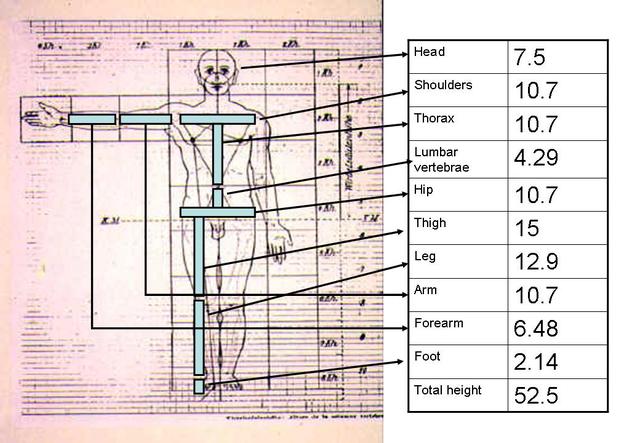Re: building first marionette Posted by Billy D. Fuller on Jan 26, 2009
Posted by: to puppet on Jan 26, 2009
paper mache head, I applied paper mache over a clay model head. but it was hard to dig out the clay after the paper mache dried. I won't try that again.
You could take your clay head cut in half.......... Paper mache both halves. Then remove the clay and mache both sides together.
Billy D.
Re: building first marionette Posted by to puppet on Jan 26, 2009
Hi billy,
thanks for the tip. Actually, that's what i did. additionally i put damp tissue paper on the clay model first, per the instructions in the book, as a release agent. Still a bit tought to get out. I'll try a plaster cast next time, and I understand the shrinking dried paper mache will be much easier to get out.
thanks for your post.
thanks for the tip. Actually, that's what i did. additionally i put damp tissue paper on the clay model first, per the instructions in the book, as a release agent. Still a bit tought to get out. I'll try a plaster cast next time, and I understand the shrinking dried paper mache will be much easier to get out.
thanks for your post.
Re: building first marionette Posted by Billy D. Fuller on Jan 26, 2009
By the way you are doing a great job ! Thanks for sharing the pictures with us.
Billy D.
Billy D.
Re: building first marionette Posted by Shawn on Jan 26, 2009
It looks like Jorge gave you information on proportion. To tell you the truth I was never much for math so I simply build my marionettes by "sight". If it looks right then I do it. 
What part of removing the clay from the papermache' was the difficult part for you? You can use releasing agents on the clay like Vaseline (petroleum jelly) or even cooking oil but it cuts down on the amount of times you can reuse the clay. Even with making a plaster cast you are going to have a problem with removal if you do not seal the plaster or use a releasing agent.
Sonny is pretty handy with Latex and perhaps he'll be along to give input on that subject but I have found that latex is not the best thing for body parts on marionettes. The thickener sold at the supply store would give you a bit more structure but the floppiness is more a result of the amount of layers of latex used. Neoprene is a product that many puppet builders use for body parts but I don't use it. Although I did say that I don't use latex for body parts above, I should mention that I have used it or a product called Tool dip as a coating over papermache' and other base body parts to give a skin like appearance.

What part of removing the clay from the papermache' was the difficult part for you? You can use releasing agents on the clay like Vaseline (petroleum jelly) or even cooking oil but it cuts down on the amount of times you can reuse the clay. Even with making a plaster cast you are going to have a problem with removal if you do not seal the plaster or use a releasing agent.
Sonny is pretty handy with Latex and perhaps he'll be along to give input on that subject but I have found that latex is not the best thing for body parts on marionettes. The thickener sold at the supply store would give you a bit more structure but the floppiness is more a result of the amount of layers of latex used. Neoprene is a product that many puppet builders use for body parts but I don't use it. Although I did say that I don't use latex for body parts above, I should mention that I have used it or a product called Tool dip as a coating over papermache' and other base body parts to give a skin like appearance.
Re: building first marionette Posted by Jorge on Jan 27, 2009
To take the clay off, a clay loop is very useful. I am not sure with the name, but here you have a picture http://www.grumpkins.com/faq/clayloop.php
I use to employ the same wooden skeleton when constructing. Here you have a diagram. I hope it is understandable! arrows are because i am not sure of my translation of body parts! in the table lengths are in centimeter.
Each square means a piece of wood. In the "spine" thorax and shoulders are fixed with a screw, so do lumbar and hip, and there is a leather joint between thorax and lumbar vertebrae more or less where the navel.
The length of lumbar includes the thickness of the hip; the length of thorax includes thickness of shoulders.
These are tentatives, and generally I cut legs and thighs. Hands and feet as long as head or a bit bigger work well
work well
I use to employ the same wooden skeleton when constructing. Here you have a diagram. I hope it is understandable! arrows are because i am not sure of my translation of body parts! in the table lengths are in centimeter.
Each square means a piece of wood. In the "spine" thorax and shoulders are fixed with a screw, so do lumbar and hip, and there is a leather joint between thorax and lumbar vertebrae more or less where the navel.
The length of lumbar includes the thickness of the hip; the length of thorax includes thickness of shoulders.
These are tentatives, and generally I cut legs and thighs. Hands and feet as long as head or a bit bigger
 work well
work well
Loading
No More Post
Error
- ← Previous
- 1
- 2 (current)
- Next →
Loading